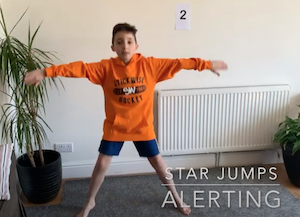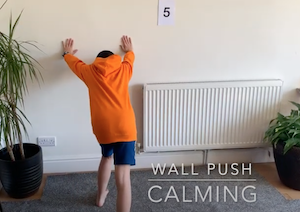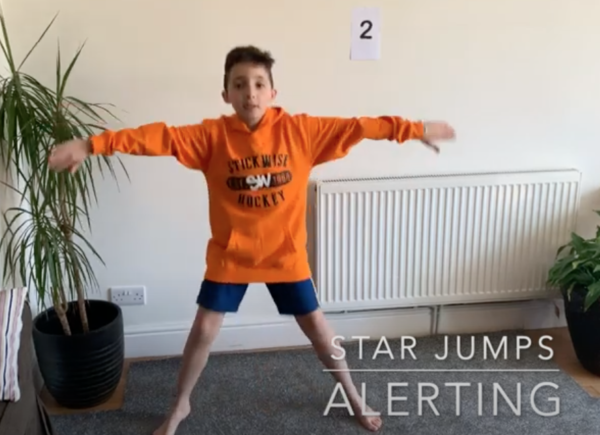What does starting the day look like for your children with autism? Do some kids with ADHD bounce into your classroom while others never appear to wake up fully and engage? If we approach motivation and engagement with sensory needs in mind, there are many logical processes that have to take place to ensure body and mind are in the best place for learning.
I was already teaching in a special school for children with autism and complex needs when I first came across sensory circuits. I watched a session in which I was supported by the occupational therapist, and as I came from a PE background thought, “Yep easy, I’ve got this.”. I’d seen children balancing bean bags on their heads, rolling on gym balls and crawling through tunnels. It’s just a big obstacle course to wake up with, right? Wrong!
Admittedly we had fun for quite a while with the adventure courses I created in the hall. If you ask any PE teacher, there is nothing better than raiding the PE cupboard and get all the fun stuff out at once, and starting the day with exercise. However, I then developed my knowledge of sensory processing disorder and discovered words such as vestibular and proprioception. My eyes had certainly been opened and henceforth the overnight theory was applied to my daily circuits. The sensory circuit had finally arrived in my class and it has remained so ever since.
The 3 Stages of a Sensory Circuit
All children are different and have different needs in terms of being in a ready state for learning. Sensory circuits aim to prepare the body and focus the mind for learning. Some children are bouncing the minute they wake and others need a little help in waking up and getting into an activity.
Sensory circuits should meet the specific needs of your child, so for those who appear lethargic, spend longer on the alerting stage and less time on calming, if at all. Alternatively, for children who are lively try focusing on the organising and calming tasks and less time if any, on the alerting stage.
I tend to select 2 activities from each of the 3 stages listed below, when starting up a new sensory circuit with children I don’t know so well:
ALERTING

This is for waking up the body. These activities stimulate the body’s central nervous system in preparation for learning, so we want maximum movement and the whole body involved.
- running
- jumping
- bouncing
- skipping
ORGANISING

Now, I like to remember this as an activity where multiple skills are combined. It is here that the activities demand the brain and body work together. They include balance, co-ordination and above all concentration.
- balancing along a line and carrying an object
- self-propelling on a skateboard and placing an item in the correct place
- crawling under a table and placing a letter in correct the place to spell a word
- balancing on wobble board and “throw & catch” a bean bag
- commando crawling on their belly with a puzzle piece to place
CALMING

Calming activities are those that develop children’s awareness of their body in space. Consequently this in turn increases the ability for the child to self regulate sensory input. The activities often include heavy muscle work and deep pressure. I have found from practise that these activities work brilliantly throughout the day for children with ADHD. Therefore, deep pressure, proprioception and calming all go hand in hand.
A couple of safety pointers coming up, however if you have any direct concerns you should seek advice from your occupational therapist. Respect and personal space should be considered for these activities, and that’s for everyone in the room. How would the culture of your school view a foot massage or even some full body squashing? Let’s not forget, some children do not like physical touch, so know your children, get creative and find alternative solutions. These practices are recommended by autistic adults such as Temple Grandin, who went on to make her own squeeze machine. She started by lying under her mattress to help de-stress. The compression gave a sense of security and therefore brought about calmness to her body and mind.
You might want to try some of the following for your calming stage:
- whole body squash with sofa cushions (prone position – face down)
- gym ball rolled on top of child (prone position – face down)
- weighted blanket wrapped around shoulders
- massage
- wall press
- upside down wall press
There are many variations based on the 3 stages for sensory circuits as you have to be creative with the equipment you have to hand. Yes, you can buy many different pieces of specific equipment for your sensory circuit, such as a squeeze machine, balance beams and sensory stepping stones, but you don’t have to. I sincerely believe it’s more important that the adult leading the circuit understands what they are doing. A knowledge rich adult will be able to adapt the sessions to keep them fresh and appealing. Furthermore they can do this whilst maintaining the concepts behind the sensory circuit.
Check out our video below to see the Starting the Day Sensory Circuit in practise:
So we hope you feel a little more confident now to set up a sensory circuit in your classroom or home. Remember, starting the day only happens once, so think differently and enjoy………..
We have a variety of BRAIN BREAK visual cards available in our store. The visuals encourage movement breaks for kids throughout the day. CLICK HERE to view.
thinking differently
The Autism Junction
